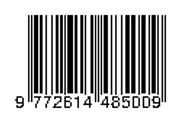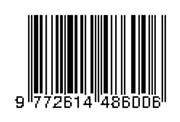System Telemetry for Mobile Devices Using the GPS Neo-6M and DHT11 Modules A Case Study by IMEI Team
DOI:
https://doi.org/10.26905/jeemecs.v6i2.9945Keywords:
Formula One (F1), Shell Eco-Marathon (SEM), Kontes Mobil Hemat Energi (KMHE), Telemetry System, Internet Of Things, Sensor DHT11Abstract
Telemetry systems are used during Formula One (F1) and Shell Eco Marathon (SEM) races to monitor car conditions and performance during the race. This telemetry system is designed to monitor the performance of the car in real time by obtaining data about speed, steering room temperature, and other parameters. The purpose of making this tool is to be able to strategize during a good and efficient race. In this research on telemetry system development, several sensors and electronic devices are used to monitor car performance. This telemetry system consists of several sensors installed on the car, such as the U-blox Neo 6m GPS sensor and the DHT 11 sensor. These sensors collect data and transmit it to the control unit, which then sends the data to the server. The method used in this research includes several stages, namely telemetry system development, trials and testing, and data analysis. The main result of this research is the development of a telemetry system that can monitor the performance of electric cars in real-time. This telemetry system can provide useful information for the driver on the track and the team at the track. In addition, the results of this research also show that the telemetry system developed can produce accurate and reliable data. An electric car telemetry system can be a very useful tool for electric car users and manufacturers in improving the efficiency and performance of electric cars. In this study, the development of the telemetry system has successfully produced a tool that can monitor the performance of electric cars in real time and provide useful information for users and electric car manufacturers. It is hoped that the results of this research can help in developing more efficient and environmentally friendly electric car technology in the futureDownloads
References
B. Losper, B. Groenewald, and V. Balyan, “Remote electrical vehicle communication system,†in 2017 Fourth International Conference on Image Information Processing (ICIIP), IEEE, 2017, pp. 1–4.
M. R. Hammady, A. Rusdinar, and I. P. D. Wibawa, “Sistem Telemetri pada Mobil Listrik Inacos Berbasis IOT Universitas Telkom,†eProceedings of Engineering, vol. 5, no. 1, 2018.
M. Badri, J. T. Mesin, F. Teknik, and U. Riau, “Manufaktur Bodi Kendaraan Shell Eco Marathon (Sem) Tipe,†vol, vol. 4, pp. 1–7.
A. G. Calderón, G. G. G. Ruiz, and A. C. G. Bohórquez, “GPRS telemetry system for high-efficiency electric competition vehicles,†in 2013 World Electric Vehicle Symposium and Exhibition (EVS27), IEEE, 2013, pp. 1–7.
M. Tadjuddin, U. Aulia, T. Firsa, and R. Alfurqan, “Strategi Mengemudi Mobil Listrik Pada Kontes Mobil Hemat Energi (KMHE),†in Seminar Nasional Tahunan Teknik Mesin XVI-2017, 2017.
M. Tadjuddin, U. Aulia, T. Firsa, and R. Alfurqan, “Strategi Mengemudi Mobil Listrik Pada Kontes Mobil Hemat Energi (KMHE),†in Seminar Nasional Tahunan Teknik Mesin XVI-2017, 2017.
F. N. F. N. Falah, G. P. Adi, C. Saraswati, H. Prasetyo, M. Djunaidi, and R. Fitriadi, “Penetapan Spesifikasi Desain Body Composite Untuk Urban Concept Berdasarkan Regulasi Kontes Mobil Hemat Energi 2018 menggunakan Metode Quality Function Deployment (QFD),†in Prosiding University Research Colloquium, 2020, pp. 183–189.
N. A. Hidayati, F. Setiaji, M. Yaqin, D. M. Ulfa, and M. A. Choiron, “Analisis aerodinamis pada variasi bentuk ekor desain bodi mobil hemat energi,†J. Energi dan Manufaktur, vol. 10, no. 2, pp. 66–70, 2017.
A. Wahab, M. Rohman, A. Saepuddin, and M. Sulaiman, “Desain dan simulasi uji kekuatan chassis mobil SEM jenis prototype menggunakan material aluminium alloy 7075,†Jurnal Teknik Mesin Indonesia, vol. 17, no. 1, pp. 78–85, 2022.
V. A. Iriciuc and A. Kotlar, “Sensor Monitoring System for Formula Student Car,†in 2018 IEEE 24th International Symposium for Design and Technology in Electronic Packaging(SIITME), IEEE, 2018, pp. 206–297.
N. Nikolov, “Research of automotive infotainment system and its design with IoT connectivity,†in 2022 13th National Conference with International Participation (ELECTRONICA), IEEE, 2022, pp. 1–4.
M. S. Maulana and I. Sulistiyowati, “Sistem Telemetri Mobil Listrik IMEI TEAM UMSIDA Berbasis Iot Dan U-blox Gps Neo-6m,†SinarFe7, vol. 3, no. 1, 2020.
N.-M. Drogeanu, L.-A. Perişoară, and J.-A. Văduva, “Web Interface for IoT Vehicle Monitoring System,†in 2022 IEEE 28th International Symposium for Design and Technology in Electronic Packaging (SIITME), IEEE, 2022, pp. 185–190.
I. H. Suprobo, A. Yuandari, A. Hartono, H. S. Kumoro, H. V. PDM, and Y. A. Sumantri, “SISTEM TELEMETRI MOBIL LISTRIK ARUGO,†IMDeC, p. 177, 2021.
V. Rahatal, P. More, M. Salunke, S. Makeshwar, and R. D. Joshi, “IoT Based Communication System for Autonomous Electric Vehicles,†in 2021 7th International Conference on Signal Processing and Communication (ICSC), IEEE, 2021, pp. 66–72.
E. M. Antonyuk, I. E. Varshavskiy, I. S. Kolpakova, A. A. Minina, and P. E. Antonyuk, “Telemetry system with adaptive commutation,†in 2016 IEEE NW Russia Young Researchers in Electrical and Electronic Engineering Conference (EIConRusNW), IEEE, 2016, pp. 389–391.
M. A. Rafique, I. Alam, M. Tayyab, and A. Mustafa, “A cost and resource efficient telemetry host station design using FPGA,†in 2018 15th International Bhurban Conference on Applied Sciences and Technology (IBCAST), IEEE, 2018, pp. 799–804.
S. Taghizadeh, P. Jamborsalamati, M. J. Hossain, and J. Lu, “Design and implementation of an advanced vehicle-to-vehicle (V2V) power transfer operation using communications,†in 2018 IEEE International Conference on Environment and Electrical Engineering and 2018 IEEE Industrial and Commercial Power Systems Europe (EEEIC/I&CPS Europe), IEEE, 2018, pp. 1–6.
G. Hristov, P. Zahariev, S. Borisov, and D. Kyuchukova, “An educational system for real-time monitoring and evaluation of the parameters of electric vehicles,†in 2016 15th International Conference on Information Technology Based Higher Education and Training (ITHET), IEEE, 2016, pp. 1–5.
K.-Z. Tang, S. Tang, N. P. Kusumadi, and S. H. Chuan, “Development of a remote telemetry and diagnostic system for electric vehicles and electric vehicle supply equipment,†in 2013 10th IEEE International Conference on Control and Automation (ICCA), IEEE, 2013, pp. 609–613.
F. Firdiansyah, S. Siswanto, M. Anif, and B. H. Prasetyo, “Kendali dan Monitoring Ruang Server dengan Sensor Suhu DHT-11, Gas MQ-2 serta Notifikasi SMS,†Prosiding SISFOTEK, vol. 3, no. 1, pp. 122–130, 2019.
I. Sulistiyowati and M. I. Muhyiddin, “Disinfectant Spraying Robot to Prevent the Transmission of the Covid-19 Virus Based on the Internet of Things (IoT),†Journal of Electrical Technology UMY, vol. 5, no. 2, pp. 61–67, 2021.
Downloads
Published
Issue
Section
License
Our ethic statements are based on COPE’s Best Practice Guidelines for Journal Editors.
Publication decisions
The editor is responsible for deciding which of the articles submitted to the journal should be published.
The editor may be guided by the policies of the journal's editorial board and constrained by such legal requirements as shall then be in force regarding libel, copyright infringement and plagiarism. The editor may confer with other editors or reviewers in making this decision.
Fair play
An editor at any time evaluate manuscripts for their intellectual content without regard to race, gender, sexual orientation, religious belief, ethnic origin, citizenship, or political philosophy of the authors.
Confidentiality
The editor and any editorial staff must not disclose any information about a submitted manuscript to anyone other than the corresponding author, reviewers, potential reviewers, other editorial advisers, and the publisher, as appropriate.
Disclosure and conflicts of interest
Unpublished materials disclosed in a submitted manuscript must not be used in an editor's own research without the express written consent of the author.
Duties of Reviewers
Contribution to Editorial Decisions
Peer review assists the editor in making editorial decisions and through the editorial communications with the author may also assist the author in improving the paper.
Promptness
Any selected referee who feels unqualified to review the research reported in a manuscript or knows that its prompt review will be impossible should notify the editor and excuse himself from the review process.
Confidentiality
Any manuscripts received for review must be treated as confidential documents. They must not be shown to or discussed with others except as authorized by the editor.
Standards of Objectivity
Reviews should be conducted objectively. Personal criticism of the author is inappropriate. Referees should express their views clearly with supporting arguments.
Acknowledgement of Sources
Reviewers should identify relevant published work that has not been cited by the authors. Any statement that an observation, derivation, or argument had been previously reported should be accompanied by the relevant citation. A reviewer should also call to the editor's attention any substantial similarity or overlap between the manuscript under consideration and any other published paper of which they have personal knowledge.
Disclosure and Conflict of Interest
Privileged information or ideas obtained through peer review must be kept confidential and not used for personal advantage. Reviewers should not consider manuscripts in which they have conflicts of interest resulting from competitive, collaborative, or other relationships or connections with any of the authors, companies, or institutions connected to the papers.
Duties of Authors
Reporting standards
Authors of reports of original research should present an accurate account of the work performed as well as an objective discussion of its significance. Underlying data should be represented accurately in the paper. A paper should contain sufficient detail and references to permit others to replicate the work. Fraudulent or knowingly inaccurate statements constitute unethical behavior and are unacceptable.
Originality and Plagiarism
The authors should ensure that they have written entirely original works, and if the authors have used the work and/or words of others that this has been appropriately cited or quoted.
Multiple, Redundant or Concurrent Publication
An author should not in general publish manuscripts describing essentially the same research in more than one journal or primary publication. Submitting the same manuscript to more than one journal concurrently constitutes unethical publishing behaviour and is unacceptable.
Acknowledgement of Sources
Proper acknowledgment of the work of others must always be given. Authors should cite publications that have been influential in determining the nature of the reported work.
Authorship of the Paper
Authorship should be limited to those who have made a significant contribution to the conception, design, execution, or interpretation of the reported study. All those who have made significant contributions should be listed as co-authors. Where there are others who have participated in certain substantive aspects of the research project, they should be acknowledged or listed as contributors.
The corresponding author should ensure that all appropriate co-authors and no inappropriate co-authors are included on the paper, and that all co-authors have seen and approved the final version of the paper and have agreed to its submission for publication.
Disclosure and Conflicts of Interest
All authors should disclose in their manuscript any financial or other substantive conflict of interest that might be construed to influence the results or interpretation of their manuscript. All sources of financial support for the project should be disclosed.
Fundamental errors in published works
When an author discovers a significant error or inaccuracy in his/her own published work, it is the author’s obligation to promptly notify the journal editor or publisher and cooperate with the editor to retract or correct the paper.










